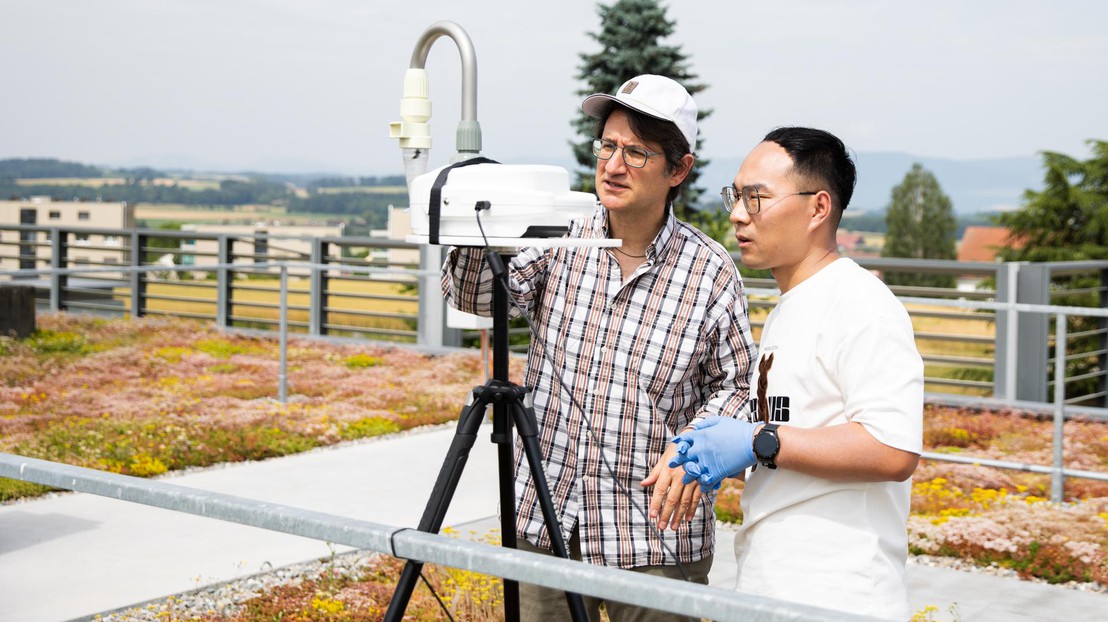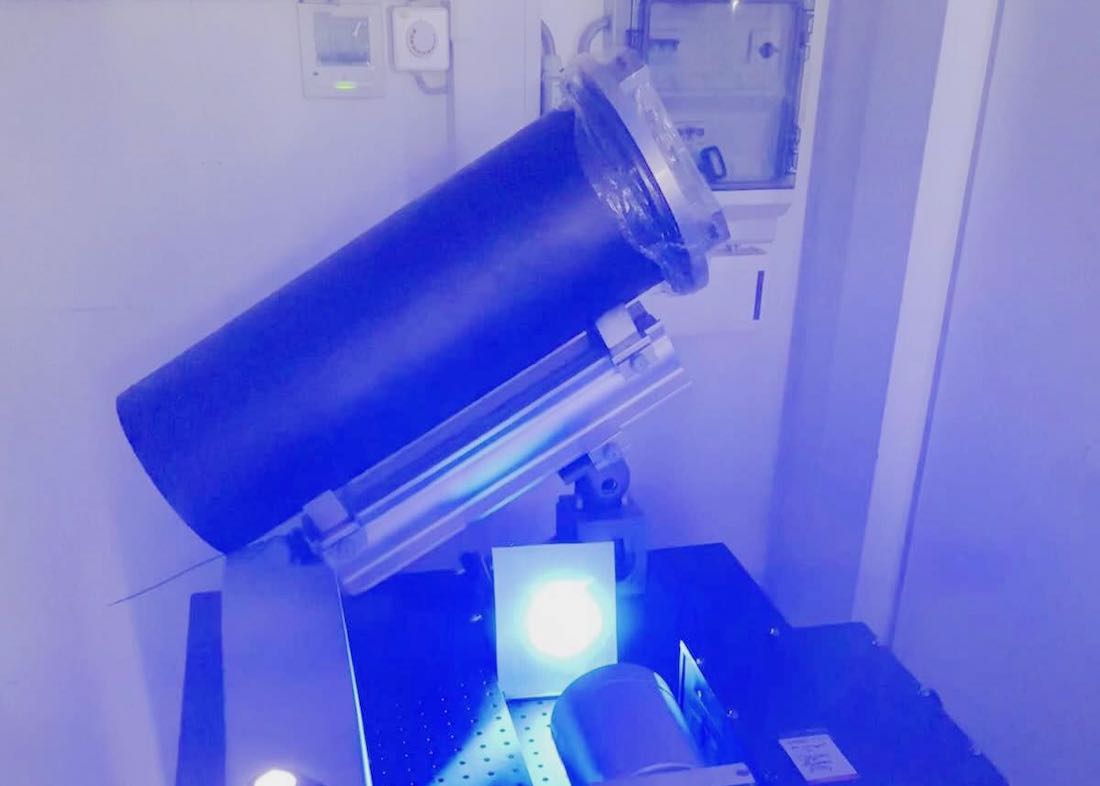Tokyo (SCCIJ) – The global incidence of hay fever is increasing. Now, a cutting-edge Swiss measuring device, one of only four worldwide, enhances pollen forecasts, offering relief to those affected. This fully automated system delivers real-time data and stands as the most advanced of its kind globally.

Prof. Athanasios Nenes and postdoc Kunfeng Gao on the roof of the MeteoSwiss building in Payerne (© A. Goy/EPFL).
Advancing technology
At the MeteoSwiss aerological station in Payerne, a sophisticated device captures air and its particles, directing pollen grains into a measuring chamber. Here, lasers and ultra-fast cameras analyze their shape and size. AI algorithms then process this data, identifying highly allergenic pollens like grass and ragweed.
This technological advancement enables the rapid counting and identification of a vast array of particles, offering insights into the hourly fluctuations of airborne pollen concentrations. It aids in enhancing the accuracy of short- and medium-term pollen forecasts, benefiting allergy sufferers in Switzerland and Europe. Additionally, researchers and doctors utilize this data to assess treatment effectiveness.
The integration of this real-time data into a weather forecast model marks a pivotal advancement, offering the public instant access to detailed and reliable pollen forecasts. Consequently, individuals prone to allergies can proactively implement preventive measures or treatments, mitigating the intensity of allergic reactions, writes the Swiss news agency Swissinfo.

This LiDAR system detects presence and concentration of pollen 5,000 meters above the ground (© LAPI/2023 EPFL).
Detecting pollen
Another new cutting-edge measuring instrument on the roof of the Payerne Aerological Station is the result of a joint initiative between the Swiss Federal Institute of Technology in Lausanne (EPFL), the Swiss Federal Office of Meteorology Climatology, and European partners. This pioneering project aims to improve pollen forecasting and to gain further insights into the impact of bioaerosols, smoke, and dust on cloud formation and climate.
The prototype device emits a laser pulse that detects the presence and concentration of a wider range of pollen types up to 5,000 meters above the ground. This LiDAR (light detection and ranging) system consists of an ultraviolet-pulsed laser coupled with a receiver telescope and electro-optical instruments. Together, these technologies detect the light reflected by particles in real-time. At night, they pick up the “glow” generated by the laser when it strikes these particles.
The resulting color spectrum serves as a unique “digital fingerprint,” signaling the presence of airborne pollen, fungal spores, and bacteria, as well as smoke particles and dust, by way of fluorescence-based detection. Thus, in May and June, it found that Swiss air was laden with smoke particles from wildfires in North America. There are only four instruments of this kind currently in operation worldwide, and all of them are still highly experimental; this new one is the most advanced in terms of capacity, reports EPFL News.
Text: SCCIJ based on material of Swissinfo and EPFL News/Sandrine Perroud





























